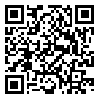Articles accepted at the time of publication
Back to the articles list |
Back to browse issues page
1- Art University of Isfahan , rastegar.sahar@gmail.com
2- Faculty member of Isfahan University of Arts
2- Faculty member of Isfahan University of Arts
Abstract: (2271 Views)
Due to ethnic, religious and cultural diversity, Zahedan has a heterogeneous and diverse population. The diversity of religions and denominations from the formation of this city until the Islamic Revolution has never been a matter of dispute and peaceful coexistence between different religious groups has been established in this city. After the victory of the Islamic Revolution and the continuation and emergence of Shiism as the official religion of the country, the Baluch people, due to differences in religion, became less integrated with the central government than the Sistani's and became more and more isolated in identity. The objective manifestation of these gaps can be seen in the most symbolic religious element of the city, namely the Makki Mosque. The hidden signs in this mosque as an arena to show the ethnic-religious hegemonic power of the Sunni Baluchi's, with unusual dimensions and heights and unfamiliar forms and decorations, have dominated their surrounding context and produced special semantic rules. In the face of such a situation, the narrator of the Makki Mosque has experienced signs of apathy because the signs used in this mosque have acted in disconnection with the previous meanings of the Baluch mosques and have become an unfamiliar text for the narrator. Finally, the Makki Mosque has provided an opportunity to represent concepts and issues that can take us deeper into the Baluch cultural layers and provide a relatively deep understanding of the people's situation in contemporary society.
Article Type: مقالات علمی پژوهشی |
Subject:
Semiotics
Send email to the article author
| Rights and permissions | |
 |
This work is licensed under a Creative Commons Attribution-NonCommercial 4.0 International License. |








